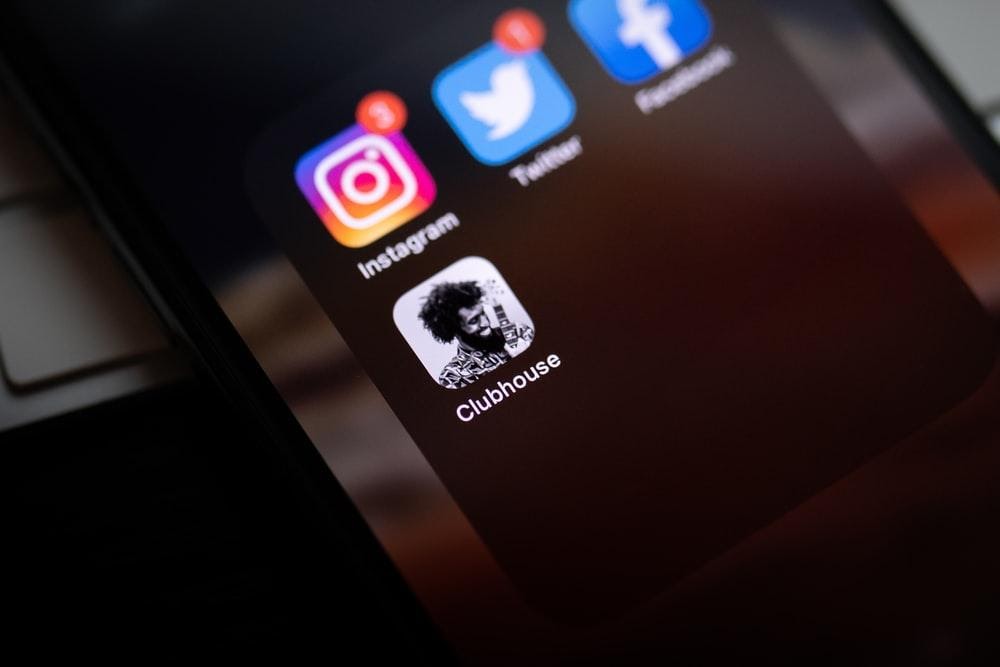Ecommerce, whether its B2B or B2C, is on the rise.
From small businesses to giants alike, 2020 was the best year for ecommerce hands down. Reaching over $374 billion dollars in the United States alone, the market is predicted to rise up to $476 billion this year.
While there is no doubt that the giants are dominating the eCommerce game, there are plenty of small to medium independent eCommerce stores who have seen sales increase in 2020.
As an eCommerce store, how can you expect to reach more customers?
Well, the answer lies in having the right features and the right ecommerce platform to market your ecommerce store.
In this post, we’ll be discussing the eight eCommerce features that you need to have in order to get the right traffic, traction, and in turn, revenues for your store.
Search Engine Optimization for Maximum Business Visibility

This one is a given. With over 53% consumers in the US stating that they first search online for a product before purchasing and the fact that google is responsible for 59% of the worlds web traffic makes it all the more interesting to invest in SEO for your eCommerce store.
SEO is a major part of organic marketing. A slow, yet fruitful method of gaining traffic, it comprises people who visited your store because they are interested in what you have to offer in one form or another.
Regardless of what the paid marketing critics say, SEO works. Driving more than 1000% traffic than social media.
As we discussed before, it’s a method that takes time and effort. You need to learn about Google indexing, robots.txt, Yoast (and other SEO plugins), meta descriptions, meta titles, and a list of other things.
Most modern ecommerce platforms provide these features and can prove detrimental in your efforts.
If you have a B2B store, then you can use B2BWoo, built on WooCommerce to utilize the potential of SEO for your eCommerce store.
Customer Convenience Through Live Chat

Similar to traditional brick and mortar stores, where you have a customer service representative present, 41% of ecommerce users expect live chat on their website.
“Website” is the keyword here. That statistic is just for the desktop view. If the customer is accessing your store or web application on mobile, the number can rise as high as 50%.
If you’re looking to improve the position of your eCommerce store, you need to invest in customer service.
Ideally, you should look at customer service from an omni-channel perspective. Adding a single method of reaching out to you isn’t going to cut it. You need to have multiple channels (social media, live-chat, email, phone, and even SMS) for the customer to reach out to you.
The freedom of choice enables customers to get connected and seek help in the manner that suits them best.
In addition to that, you should also focus on solving queries through content. While we will get to that later on in the article, just know that having a knowledge base or an FAQ section on your website can prove to be a game changer for your business.
Social Media and Ecommerce Stores

Social media is present at every corner of the world, connecting us with other people across continents and oceans. Statistically, 45% of the world’s population is on social media with the number growing as internet penetration becomes commonplace. For the majority it’s a supremely engaging activity.
For a business to get its message and brand voice across to the audience, having a social media presence is vital.
On your website, you need to have social media buttons present. Ideally, you should select a few social media platforms relevant to your niche from which to gain engagement, while having a minor presence on others.
For example, if you’re running a B2B store, you can establish a primary social media presence on LinkedIn, while also keeping in touch with other prospective social media outlets like Facebook or Twitter.
If you’re using WooCommerce or any other major eCommerce platform provider, then you can easily integrate social media buttons to your eCommerce store.
There are plenty of ways you can engage with audiences on social media.
Offering Discounts For Customer Retention

Coupons and discounts can go a long way when it comes to driving traffic, and acquiring more customers to your store.
In fact, discounts are game changers that can often drive a customer or a prospect to make a purchase. Statistics show that coupons can influence purchase decisions by prompting an estimated 86% customers to try out a new product.
There are plenty of tools and plugins that can allow you to set up a discount functionality on your ecommerce store.
Ideally, you should also include a discount on referral. This enables an existing customer to purchase a product if he/she recommends a product to his friends or family members. This process can go so on and so forth.
Utilizing Conversion Rate Optimization Strategies

Optimization of your customer journey is the game plan for 60% of online marketers.
Conversion rate optimization is the building block of gaining more customers to your ecommerce store. In a recent study by Econsultancy, it was estimated that 44% of marketers use split testing software to see what design elements work and what doesn’t.
By placing the right elements at the right place on your website, you can see what settings work.
On WooCommerce, there are plenty of plugins for conversion rate optimization. The prominent amongst them being Nelio A/B testing software that lets you decide between the layout of your store for maximum conversion.
In addition to optimizing the layout, you should also consider the layout of your checkout page. All things will fall apart if you don’t have a layout that’s designed for conversions.
Make sure that the layout is quick and optimized for checkouts.
A Blogging Platform for Customer Engagement

As we are writing this, on WordPress alone, there are over 70 million blog posts being uploaded every month.
They are being uploaded for a reason. They are one of the most effective mediums of getting your word out to the public. If you want to build a healthy audience, and connect with them on different levels, then you need to start blogging!
You might be wondering how eCommerce and blogging can work with one another. Well, you can write product reviews, product comparisons, and case studies regarding the use of your product.
Well-written and informative content can not only generate a healthy audience, but also enables you to become a thought leader whose content can generate plenty of backlinks to your website and its product pages.
Blogging has tremendous SEO value as well. It favors sites with dynamic, original, and consistent content. According to Hubspot, there is a strong correlation between writing blog content and gaining more traffic.
When you’ve integrated a blogging platform with your store, you’re decreasing your bounce rates by keeping people engaged with your store for longer periods of time.
Best part about using most modern Content Management Systems like WordPress is that it allows you to integrate a blogging section into your store without the need for a subdomain.
YouTube and Content Marketing

Video content is on the rise. It was estimated in 2018 that 85% of internet users in the United states watched video content on their mobile phones and other devices.
While you can add videos to your blog posts, there is no better way to gain traction for your website other than the video giant YouTube.
Why wouldn’t it be? YouTube’s algorithm, if not equal, is almost as powerful in refining the search experience for users as google. In fact, 70% of what people watch on YouTube is recommended by the algorithm itself.
This means that if you’re running an ecommerce related YouTube channel whose products redirect to your website, there is a high chance that relevant people are going to watch it, get interested in your product, and then proceed to purchase your product.
But here’s the thing: you’ve got to work on your video production quality in order to effectively convert visitors into paying customers.
Take the example of Marques Brownlee (aka MKBHD) on YouTube. While he doesn’t have his own website, the tech reviewer has high quality videos with Amazon Affiliate links that help convert customers.
Many YouTube marketers have succeeded in marketing their products and services with simple video production. But we’ve placed importance on video production because, statistically, 500 hours of video content is being uploaded every minute on YouTube. If you’re looking to set yourself apart from the competition, you need to bring with yourself the right gear.
Email Marketing for Retargeting, Cross Selling, And Upselling

Lastly, there is email marketing: the wise sage of internet marketing present since before the phenomenon even existed.
You can utilize Email Marketing in plenty of creative ways. You can map out your user preferences and reach out to them based on those preferences.
We’re not just basing this on hypotheticals. Email marketing is one of the most efficient Lead Generation tools present with 89% of marketers using this as one of their primary lead generation methods.
Let’s look at an example:
A customer purchases a product from your store. Being aware of their preferences, you can cross-sell or up-sell related products through sending them an email newsletter. In addition to that you can also make them revisit by regularly sending them email related to product updates, new arrivals, special discounts and coupons.
There is a reason why we wrote Email Marketing at the very last. All of the marketing features we talked about can be used interchangeably in Email Marketing. You can use content marketing, video marketing, social media content, among other things in the emails you send out to customers.
One of the giants of the email marketing game, MailChimp is available on all the major eCommerce platforms. You can use it to create aesthetically designed newsletters that can convert.
Conclusion
In this post, we discussed the right ecommerce marketing features that you can’t live without. To give you a run-down of the features:
Search engine optimization
- Add live chat to your website.
- Utilize social media.
- Add discount coupons and referral deals.
- Focus on the layout of your ecommerce website.
- Create a blogging platform.
- Invest in YouTube marketing.
- Email marketing.
If you want to succeed with your eCommerce store, then you need to have these features with you.
If you’re looking to set up a digital B2B presence online, then look no further than B2Bwoo – an all-in-one WooCommerce B2B ecommerce solution. With the platform at your behest, you can provide your customers with a stellar B2B experience.
Read Also
- 10 Essential B2B Marketing Strategies to Grow Your Professional Services
- 5 Ways To Refine Your Omni-channel Strategy
- 11 Examples of B2B SaaS Companies Improving Business Productivity
- 5 Reasons Behind the Shopping Cart Abandonment and Tips on Preventing Them
- B2B Ecommerce Facts in 2021 Every B2B Leader Should Know
- Which B2B eCommerce Platform To Use For Your B2B eCommerce Site
- 10 B2B eCommerce Advantages To Capture Before Your Competition
